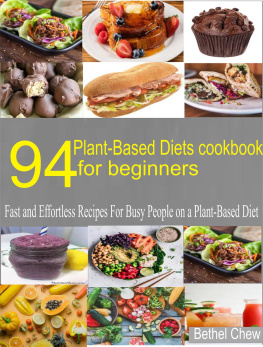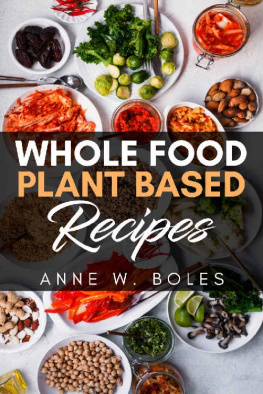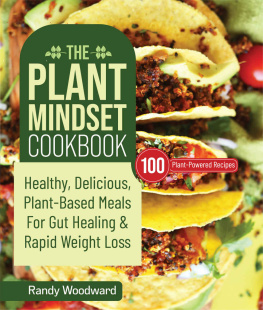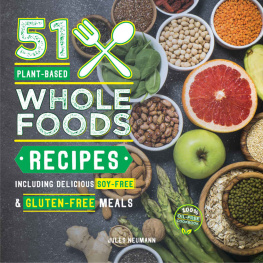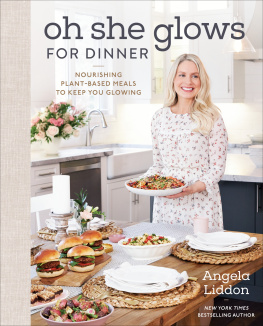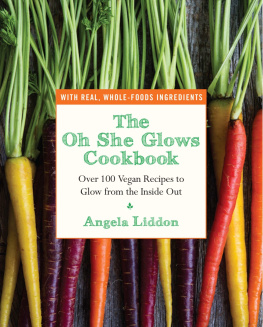Oh She Glows Every Day features more than 100 plant-based, vegan recipes made from whole foods. I created these accessible, foolproof recipes for those of us with busy, active lifestyles. The better I fuel my body, the better I feel and the more energy I have to power through my days, and I want you to feel this way too! If your goal is to nourish yourselfand your familywith delicious meals thatll have you bursting with energy, this book is for you. Throughout the book, youll find oodles of helpful tips and tricks for getting the most out of each recipe. Keep your eyes peeled for things like kid-friendly or allergy-friendly versions, as well as suggestions on how to freeze and reheat leftovers.
Oh She Glows Every Day is divided into nine different chapters to nourish you throughout the day:
Smoothies and Smoothie Bowls
Breakfast
Snacks
Salads
Sides and Soups
Entres
Cookies and Bars
Desserts
Homemade Staples
Oh She Glows Every Day also includes my favourite kitchen tools, as well as a handy resource chapter (), The Oh She Glows Pantry, which is packed with useful information detailing the ingredients I use in my every day recipes. Even though the majority of my recipes call for familiar ingredients, this section is great for providing background information, and my favorite tips and preparation methods for each ingredient.
Allergy and Preparation Labels
Near the top of each recipe, youll find various allergy and preparation labels. The allergy labels help you quickly identify which recipes will fit into your diet. Always be proactive, however, and check the labels of your ingredients to ensure the food is safe for you to consume.
vegan: The recipe does not contain any animal products, such as meat/fish, dairy, honey, etc. All recipes in this book are vegan.
gluten-free: The recipe does not contain any gluten. Be sure to check the ingredient lists of the products you use to ensure that they are certified gluten-free. Ive labelled all recipes including oats as gluten-free, but oats processed in facilities that also process other foods can be cross-contaminated, so if you cannot tolerate gluten at all, please be sure to buy certified gluten-free oats.
nut-free: The recipe does not contain any tree nuts, excluding coconut. Health Canada classifies coconut as a seed of a fruit and they do not classify coconut as a tree nut. Health Canada states that [coconuts] are not usually restricted from the diet of someone allergic to tree nuts, but of course, some reactions can occur. On the other hand, the US Food and Drug Administration classifies coconut as a tree nut, while the American College of Allergy, Asthma & Immunology classifies it as a fruit, and states that most people who are allergic to tree nuts can safely consume coconut. As you can see, there is some discrepancy over its classification. If you think you might be allergic to coconut, be sure to talk to your allergist before consuming coconut products.
soy-free: The recipe does not contain any soy products. Soy products include things like dark chocolate made with soy lecithin or tamari made from soybeans. Whenever possible I provide soy-free alternatives, such as swapping coconut aminos for tamari.
grain-free: The recipe does not contain any grains or grain flours, such as rice, oats, sorghum, millet, wheat, spelt, quinoa (even though its technically a seed), etc.
oil-free: The recipe does not contain any added oil.
advance prep required: The recipe requires some advance preparation, such as soaking nuts, chilling a can of coconut milk, freezing a banana, etc. It will also be listed in recipes for which you need to prepare another recipe (like a sauce or a topping) in advance.
kid-friendly: The recipe is wildly popular with children! All the recipes in Oh She Glows Every Day were tested by many kids, from one-year-olds to teenagers. Along with the feedback from my testers, and personal experience of feeding my own daughter and young relatives, I narrowed my recipe list to identify more than fifty recipes that were popular with kids. You can be confident that the recipes marked kid-friendly are big hits (such as cut into strips for dipping.
freezer-friendly: This recipe freezes beautifully! When you see this label you can be confident that you can make extra portions and freeze them for later. Whenever possible, I provide tips on the best method for freezing and how to reheat the recipe.
Before You Begin
I know you might be rolling your eyes here, but its worth reminding you to read the entire headnote, recipe and tips before beginning a recipe. Some recipes require advance preparation (such as soaking nuts or chilling a can of coconut milk), so it helps to plan ahead whenever possible. I also pride myself on providing as many helpful tips as I can, so be sure to read those, too. Often Ill provide a tip detailing how to modify the recipe to create something new, or how to make a recipe allergy-friendly. You wouldnt want to miss out on that, would you?
Following Recipes and Experimentation
Im a big advocate for having fun and experimenting with recipes, but I always recommend that the first time you make a recipe, you follow it exactly as its written, so you know how its supposed to turn out. If youd like to experiment after that, you have a baseline to compare it to. Keep in mind that I cant guarantee the recipe will turn out if you deviate from the recipe; Ive tested these recipes hundreds of times, as have my testers, and even small changes can drastically change the outcome of a recipe. That said, as an experienced cook, I now find that experimenting with recipes is one of my greatest joys in cooking! Dont be afraid to get creative once youre comfortable.
A Note on Salt
I provide a suggested salt amount (or range) in my recipes rather than simply saying Add salt to taste. My husband likes to remind me that as a beginner cook, he has no idea what a recipe is supposed to taste like, so hes not a fan of recipes that dont provide a little salt guidance! In this cookbook, Ill almost always tell you the amount of salt that I use as a guide, but keep in mind that you can tailor this amount to suit your own tastes. Over time, knowing how much salt to add will become intuitive, if its not already. When I provide a range, I recommend you add the lesser amount first, taste, and add more salt from there, if you desire. When sauting vegetables, I always add a generous pinch of salt early on in the cooking process (such as when sauting garlic and onion as a first step). Salting early on (as opposed to only at the end) has been found to reduce the overall amount of salt you will need in a recipe.
Oven Cooking
As a rule of thumb, I never use the ovens convection setting when developing recipes. Convection settings tend to cook foods much faster. For the best outcome, I dont recommend using your ovens convection setting when following recipes in this book. Additionally, it might be helpful to test your ovens true temperature with an oven thermometer.
Measuring Flour
I use the scoop and shake method for measuring flour; in other words, I place the measuring cup into the bag/container of flour, scoop the flour so the flour is slightly heaping over the cup, and then I shake the cup back and forth until the flour is level with the rim of the cup. This isnt the traditional way of measuring flour (spooning the flour into the cup and then leveling it off with a knife), but my method seems faster and feels more natural to me. My scoop and shake method can result in a slightly heavier cup compared to the traditional method, which is why this distinction is worth noting. When I feel a recipe calls for a



